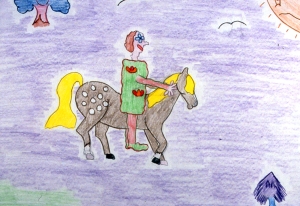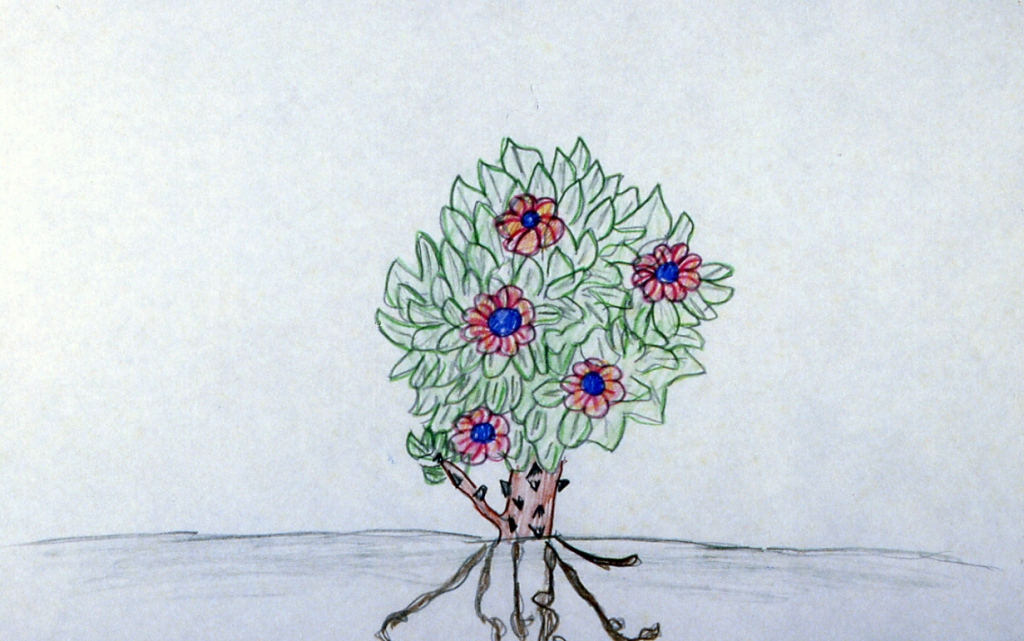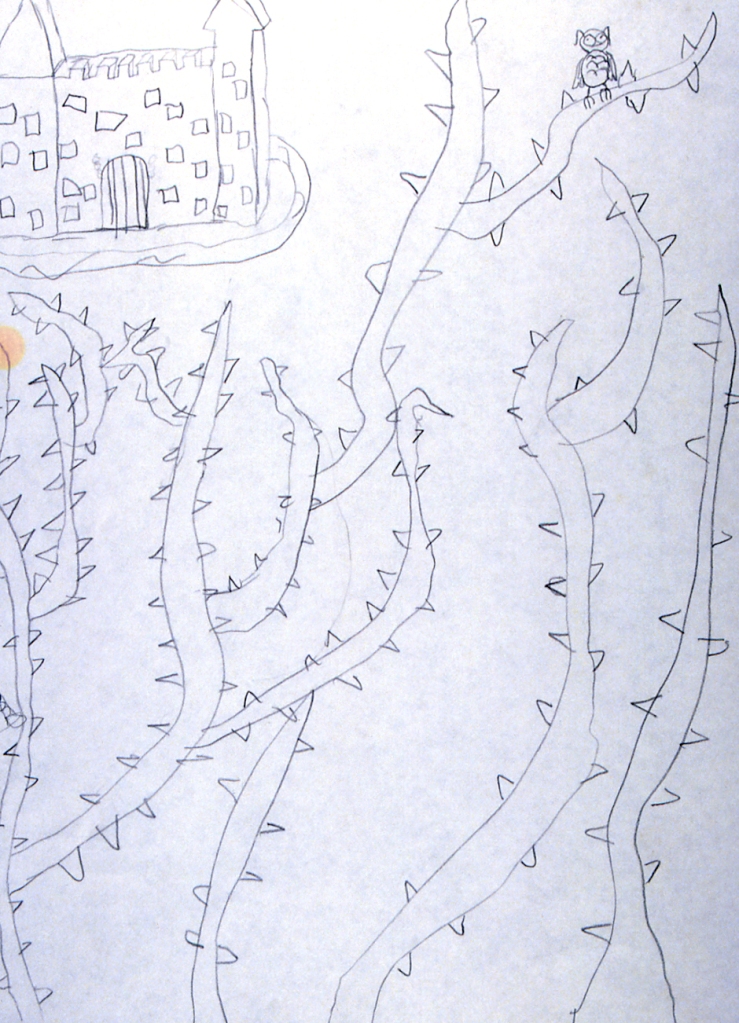How Do Children Experience Spanking?
 A trained and experienced elementary school counselor in an urban school district was asked to help a group of teachers identify 10 coping and 10 non-coping children [1] from a group of 120 fourth and fifth graders. [2], [3]
A trained and experienced elementary school counselor in an urban school district was asked to help a group of teachers identify 10 coping and 10 non-coping children [1] from a group of 120 fourth and fifth graders. [2], [3]
Children were asked to close their eyes and were guided through a brief relaxation process where they were asked to imagine that they were a rosebush. They were asked to think about what they needed, who watered them, where they were planted and what surrounded them. Then the child was asked to draw the rosebush.
Coping Children
In the Happy with Mother Duck picture, you see a lovely rosebush with roses, the sun shining up in the sky, a mother duck is swimming in the pond, and there is a sense of natural beauty, with grass growing and a proportionately sized fence for protection.
In the Imaginative picture the little girl said that she was the rosebush.
You can see an incredible sense of imagination. She is smiling while riding in the sky on her beautiful horse, with flowing mane and tail. The trees are whimsical and colorful floating in the air, and the birds are flying on a sunny day.
In the Flourishing with Root, Foliage, Flowers drawing, the rosebush has all the natural aspects of a healthy rosebush: foliage, roses, and a deep root system. There is a sense that this rose bush is doing very well and has what it needs to be nourished and to grow.
Here is a classic picture, really.
The rosebush is full of flowers, with a mother bird flying toward it with a worm in her mouth for the babies nesting there. [4] This probably makes the rosebush happy! There are small trees and a rabbit and the sun is shining.
These pictures reflect the inner world of children who are coping in school with teachers and peers, and also have an INNER sense of themselves that is healthy, nurtured, and vital.
Non-Coping Spanked Children
In the I Have to Protect Myself picture, we see a boy who was severely physically abused. We can see the extreme damage caused by hitting a child in this image of his rosebush which is essentially thorns. He says his rosebush needs guns, and knives, and a machine gun, and a machete in order to protect itself!
The Protective and in Pain picture was drawn by a girl who was spanked a lot and who we also believe was sexually molested. She says the rosebush is sore. You can see there is no vitality and that the rosebush is primarily thorns, a protective response to experiencing so much pain, injury and intrusion.
In the drawing Can’t Reach Mom or Dad, the boy was harshly spanked. He talked about the rosebush on the pavement, and you can see the cracked, ruptured road leading to a house with smashed windows and barred doorways. The boy says you can’t get into either the apartment or the house, because the doors are barred shut. (This boy’s parents were divorced and his father lived in an apartment and his mother lived in a house).
You can see that the rosebush is primarily thorns. This child does not feel that he can gain access to a feeling of home and comfort that he needs from his parents. This shows an absence of the buffering support of the caregiver that is a primary protective factor in creating resilience in the child.
Coping Spanked Child
In this Coping But Can’t Get Home drawing, the boy was only spanked, and he was selected as a coping child. He was a friendly and imaginative child. However, he described the rosebush as impossible to get through, because there are so many thorns. And if you are able to get through, the owl flies to the castle to tell. The moat is poisoned and the castle is barred shut.
The castle is the boy’s sense of home. There is no sense of home base, a place to retreat for comfort. The castle is overrun with the thorny rosebush. Here is an instance where the child appears to be coping with others and performing in school, but internally he is distressed.
We know that children who tolerate sustained levels of stress (spanking, or the threat of spanking, for example) work very hard to conform to the expectations of authority to avoid punishment. This comes at a cost to their natural spontaneity and sense of well being. As this picture demonstrates, the child is well behaved, but not out of a feeling of empathy for others, but rather from a feeling of fear for his own well being. This leads to problems later on, particularly in adolescence and early adulthood, when the teen needs to trust his own judgement. These children are more likely to distrust their own internal sense of authority and are more likely to fear the rejection of others and therefore look to others for approval and a sense of direction.

A marvelous picture book of how children feel about spanking, and respectful alternatives to teaching children.
Punishment can contribute to an ambivalent attachment between the child and her primary caregiver. This can have longterm consequences on the development of the child’s brain. An ambivalent attachment is where home (a child’s connection to his parents) is a place that is an inconsistent source of comfort, and sometimes a source of pain, fear, and abandonment – a castle with too many thorns.
Punishment may force a child to control impulses, but at the cost of increased watchfulness, anxiety and worry. This can interfere with the natural joy and comfort that the child needs to feel in their relationship to their parents, which then translates to all their relationships into adulthood.
.









